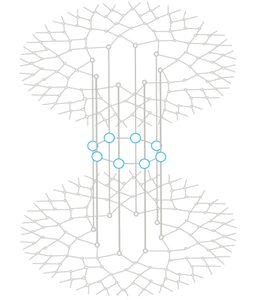Solving the “Many Electron” Problem
Why are some things hard and others soft? Why do some materials conduct electricity? And can we make materials that conduct even better? The properties of any material are determined by the interactions between its electrons, and understanding the way such properties arise at the electron level is both a fundamental scientific problem and key to creating new materials with desirable properties. The Simons Collaboration on the Many Electron Problem, which launched in March 2014, brings together physicists and chemists to work to refine existing approaches to this problem, and to invent new approaches.
A great deal of the challenge boils down to big numbers. The number of states available to a many-particle system grows exponentially as the number of electrons grows. The sheer size of the vector space that represents those states means that conventional computational approaches to managing electron-electron interactions fail. “A lot of our work consists of finding clever ways around that exponential barrier,” says Emanuel Gull of the University of Michigan, who is a member of the collaboration.
The collaboration brings together four main threads of research: cluster embedding theory, Monte Carlo methods, real material methods and tensor networks. The program hosts several conferences each year in addition to a summer school for graduate and postdoctoral students.



